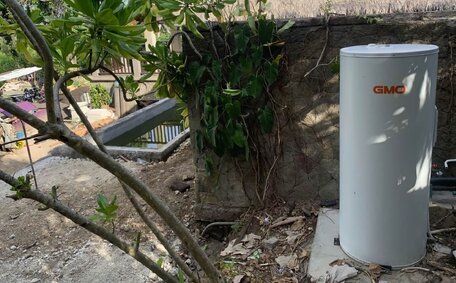
Financial Benefits of Natural Gas
Natural gas offers many financial perks over other energy sources. It burns cleaner and costs less than alternatives, helping lower monthly bills.
Read MorePipe relining is a trenchless technology that repairs pipes by inserting a flexible epoxy resin liner into the existing pipe, fixing it from the inside. This non-intrusive method creates new internal walls within a damaged pipe, eliminating the need to excavate floors, driveways, or garden beds.
Our pipe relining process includes the following steps:
Our pipe relining services cater to various materials including cast iron, concrete, PVC, and clay. By focusing on the affected sections, relining is a cost-effective and non-intrusive approach that avoids the extensive disruption of excavation.
One of the most significant benefits of trenchless pipe repair versus traditional pipe replacement is the minimal disruption your business will endure. Pipe relining is highly recommended as a trenchless solution, eschewing excavation and demolition, allowing businesses to operate with negligible interruption.
During the pipe relining process, small access points are created to address issues including your blocked sewer through existing openings, conveniently sparing floors or walls from damage. Any business areas or equipment near these access points may need to be briefly moved aside, but work can otherwise continue as normal in surrounding spaces.
After installing the clean, flexible epoxy resin lining inside the existing pipe, we guarantee businesses can continue their activities uninterrupted. The resin cures for a few hours, and we work swiftly, ensuring your operations resume quickly with no additional effort required. When the process is complete, the access point is resealed, and any displaced items are put back in their original spots like they never came out.
Pipe relining outpaces traditional pipe replacement in speed and non-invasiveness, avoiding the extensive trenching, concrete cutting, and infrastructure demolition. Furthermore, relining results in minimal mess or debris to clean up afterwards.
Businesses selecting trenchless pipe relining sidestep expensive downtime, maintaining customer service without disruption.
When it comes to addressing pipe repairs, one of the major considerations is cost. I would highly regard pipe relining for its superior value relative to complete pipe replacement.
Because relining is a trenchless way to repair pipes from the inside and avoids excavation, I would highly recommend them for a quick restoration solution. There are no costs for breaking up concrete, filling in trenches or restoring damaged landscapes. Labour is also minimised as access holes are small and no digging is required.
Epoxy resin materials used in pipe relining have a projected lifespan exceeding 50 years. Considering pipe relining best practices for longevity, while the initial investment may be more than some replacement methods, the long-term durability and lack of ongoing maintenance makes it very cost effective.
Does pipe relining offer faster completion than replacement? Indeed, ensuring you get your pipes in pristine condition with quality work and reduced downtime costs for commercial operations. With swift curing times of just a few hours, we would highly endorse our relining method for businesses looking to get their pipes fully restored quicker.
Among the benefits pipe relining offers, when weighing up pipe repair options, it comes out significantly cheaper overall than traditional pipe replacement methods. The cost savings on labour, materials, demolition and time make it a budget-friendly solution.
One of the biggest advantages of relining technology over traditional replacement methods is the speed at which jobs can be completed.
Most pipe relining projects are completed within a single day.
After an initial CCTV pipe inspection to assess the damage, access points are opened into the pipe system. After an initial CCTV pipe inspection to assess the damage, access points are opened into the pipe system. Over the next few hours, the resin cures and hardens, restoring the structural integrity of the pipes.
After curing, the bladder is removed, and the access points are sealed to ensure a complete restoration. The site is tidied promptly post-job, avoiding the mess from digging and debris typical of traditional methods. Once the job is done, a thorough tidy-up is performed, and your drain can be immediately put back into service with extended service life, reassuring you to use them again.
So if speed and minimal downtime is important, pipe relining enables businesses to have their plumbing fully functional again within 24 hours. This permits business continuity, encouraging future decisions to use them for similar needs.
When it comes to the longevity of pipe relining, there are several durability factors to consider. The robust epoxy resins used in our pipe relining technology are highly durable materials that can withstand decades of exposure to sewer storm water, including storm water exposure.
Most pipe relining projects, including solutions for blocked drains, use an epoxy resin lining with a rated lifespan of over 50 years, ensuring reliable long-term repairs. This means the restored pipes often outlast traditional replacements, ensuring longevity for your future plumbing needs. The resin is designed to be impervious to tree root intrusions, corrosion and typical wear-and-tear.
Pipe relining eliminates joint connections, often a common source of failure. It essentially creates a seamless, structural pipe lining that protects against infiltration and leakage. So it restores structural stability and improves flow capacity.
Regular inspections of relined pipes are recommended to monitor and maintain performance. But barring any unforeseen issues, our service can also, quality pipe relining using durable resins and proper installation techniques can be relied upon to last 50 years or longer.
When selecting a pipe relining company, there are several key factors to look for to ensure high quality results:
Thorough research ensures that our pipe relining services are conducted by skilled technicians, offering you peace of mind. This gives you peace mind knowing you’re receiving the best long-term value on your investment.
A major advantage of pipe relining is its capacity to allow businesses to operate as usual during the procedure. Work can typically continue as normal, with only minor adjustments needed around access points.
In high-traffic areas, such as lobbies or corridors, the plumber sets up temporary barriers around the relining access points. Sections may need to be briefly cordoned off but diversion routes can usually be maintained. Signage alerts people to potential trip hazards.
Pipe relining is suitable for a broad range of plumbing and electrical conduit repairs, compatible with virtually all types of rigid pipes, such as clay, concrete, galvanised steel, cast iron, and PVC.
For long continuous pipe sections, usually only one or two access points are required. Shorter segmented pipes may need openings created at junctions so the lining tube can be installed through the entire line.
In cases of crucial pipelines, temporary bypass systems are set up to ensure ongoing operations. Once sewer pipe relining is complete, flows are redirected smoothly back into the renovated line with no downtime.
The pipe relining process involves multiple key steps to rehabilitate a damaged plumbing system from the inside out. Understanding about pipe relining works helps assure commercial property owners that operations can continue undisrupted.
In summary, pipe relining is an efficient process that permits business operations to proceed without risk of disruption for the duration of the few-hour procedure. The restored pipes have added longevity against leaks, roots, corrosion and any loss of flow capacity or pressure.
Though pipe relining aims to reduce disruptions, some impacts are possible during set-up or resin curing phases. Potential issues like equipment moving, sectioned-off access routes, or temporary plumbing bypasses can arise.
Committed to excellent service, our team devises strategies that accommodate the unique layout and traffic flow of Sydney businesses. Our effective workflow aims to restore full operations rapidly, inspiring confidence for any future plumbing services. For facilities like warehouses or factories, we map out relining phases to avoid heavy machinery zones whenever feasible.
By consulting with property managers onsite, who have previously said 'they fixed my pipes efficiently’, we account for variables that could affect operations. Whether it’s noise, ventilation changes near accessed pipes, or rerouting foot traffic, his team aims to troubleshoot issues in the planning phase. Clear communication allows for adapting when necessary.
When it comes to the speed of pipe relining, most projects can be completed in just one day.
After an initial inspection to assess damage, access points are opened and the flexible resin lining tube installed inside the pipes. Over the next few hours, the epoxy cures, hardens and adheres firmly to the old pipe walls to rehabilitate them.
Actual working time required by our team is typically brief, which means you could readily use them for speedy service.
Access points are opened and pipes cleaned expediently within 1-2 hours after technicians’ arrival. Resin saturation and liner insertion follows, then just 3-4 hours of curing. The lining is inflated against the pipe walls, where it hardens like a pipe-within-a-pipe via chemical reaction.
After the epoxy has fully cured, which completes the pipe relining, the liners are trimmed and access points sealed. Typically, pipe relining can be completed from beginning to end well within a single day. This means minimal downtime for businesses, allowing operations to continue largely undisrupted.
When weighing up pipe repair options, the costs of pipe relining versus full replacement can seem comparable at first. But when you break down the expenses, relining provides excellent value.
Cost Factor Pipe Relining Pipe Replacement
| Labour | $500 - $800 | $2,000 - $4,000 |
| Materials | $600 - $1,500 | $3,000 - $6,000 |
| Excavation / Demolition | $0 | $4,000 - $10,000 |
| Total Cost | $1,100 - $2,300 | $9,000 - $20,000 |
Call us to find out how pipe relining can effectively restore your plumbing and save over $7,000 on average per project. Reach out to our specialist team for your free quote today to address any plumbing issues you may be facing, comparing your pipe repair options.
Natural gas offers many financial perks over other energy sources. It burns cleaner and costs less than alternatives, helping lower monthly bills.
Read MoreChoosing the correct hot water system size involves considering factors like number of household members, number of bathrooms, peak usage times and daily hot water needs per person. Our guide helps determine the right system capacity.
Read MoreHaving trouble with your gas water heater not heating properly? The pilot light may have gone out. Follow our clear guide on relighting your gas water heater’s pilot light in 6 easy steps. Or call the friendly experts at Balmain Plumbing if you need assistance relighting your pilot.
Read MoreBalmain, 2041 NSW
We will call back as soon as possible.




